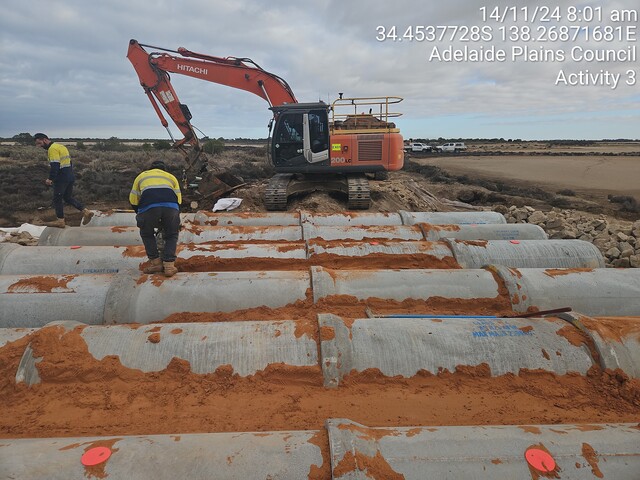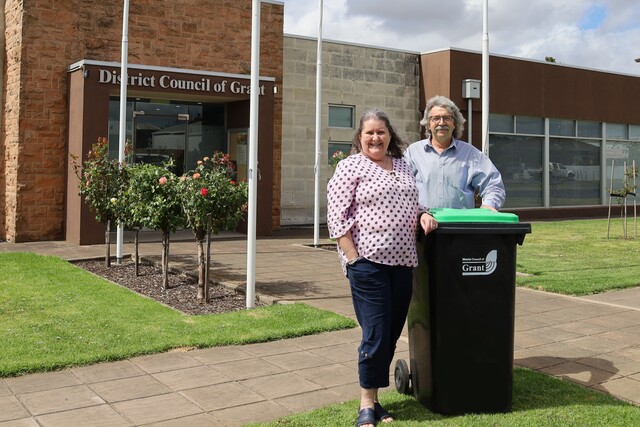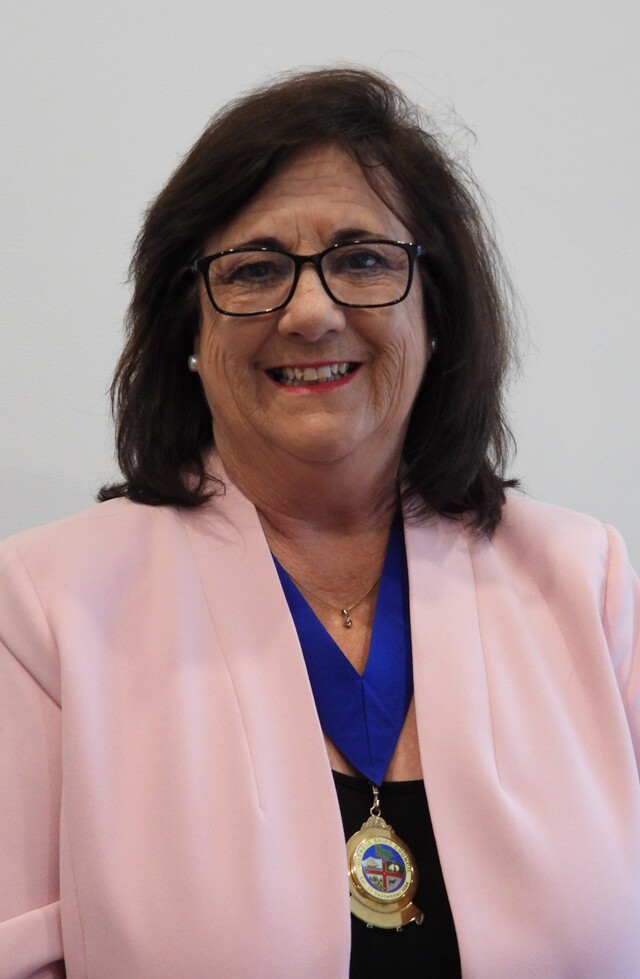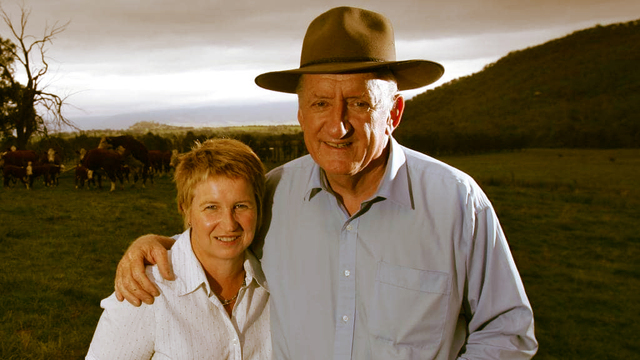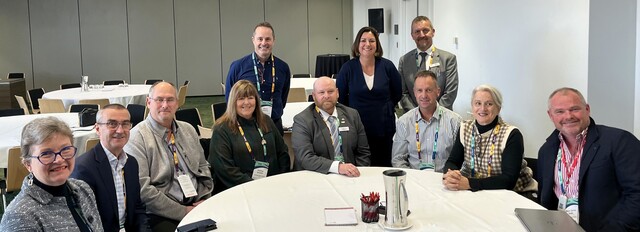A regular feature this month profiling two Councillors from Tasmania
Mayor Neil Noye , Tasman Council, Tasmania
Q. Can you tell us about yourself and your Council and community?
I am a retired farmer and contractor. I live on the family farm which, has been here since 1881. We started out with apple and pear plantations up until 1970. During the 1980s, I took over the family farm and diversified into beef, moreover Hereford cattle. I also contracted a sand and gravel pit. Now the farm belongs to my son who is the fifth generation of our family to own the property. He lives in Hobart while I still look after the farm – unpaid too! I live at Nubeena, a small town on the western side of the Tasman Peninsula. I also own a campervan and like to go out fishing with my wife. Tasman Council includes the Tasman Forestier Peninsulas. It has a population of 2,400 but swells to over 8,000 in the holiday period. In early times the Peninsula was heavily into timber and food farming. There were 35 orchards here now there is only one. However, the greatest contributors to the area now are fishing and tourism. We have a couple of huge aquaculture farms, as well as a chicken industry. We have heavy rainfall in this area, so there is also a tree and timber industry – it is quite diversified.
Q. When and how did you first get involved in Local Government?
In 1969 I visited a Councillor, Kingsley Clark, with a fruit buyer. I was involved in the fruit industry at the time. Kingsley said to me, “…you weren’t at the Council meeting on Tuesday…” “Why should I have been?” I replied. “Well you know of so much, Council appointed you to take a place,” said Kingsley. No one bothered to notify me but next month I turned up at the Council meeting and was sworn in.
Q. What have been some of the challenges you have faced while in Local Government?
I think the greatest challenge I faced was the time of the Port Arthur massacre. The community was devastated on two fronts. It hurt the economic growth and development of the area, shops and businesses were being affected, and then there was having to cope with the emotional trauma of the event. Council established a committee that I was a part of, and we were responsible for allocating the $3.6 million of Government grants provided for victims according to assessments made by counsellors and doctors. This was a mammoth task and it certainly put a lot of pressure on Council and the position of Mayor. In helping the community deal with the massacre, we held recovery meetings twice a week for residents, and informed them about steps we were taking via letter drops and meetings. We didn’t want politicians to interfere with our recovery because the community themselves knew the best way to deal with it. I was tirelessly dealing with the media at every hour from all over the world, from the BBC in London to the local media. At one stage, I was called the Mayor of Tasmania my position was elevated! Surprisingly though, the media were good to me.
Also the threat of amalgamation was certainly a challenge. We were to amalgamate with two other Councils, but this was quashed at the State elections.
Q. What are some of the high points you have experienced?
The establishment of a nursing home and units for the elderly is something of which I am very proud; it was certainly a high point of my time in Local Government. An old hospital which wasn’t being used was going to be demolished. Council then managed to convert it into an aged care complex which includes the nursing home, eight hostel units and some low and high care units. It is solely managed and operated by Council. It employs 40 people, which is a great economic boost to the area. The nursing home is important to me for it helps our elderly stay in the community. It is currently undergoing a $3 million upgrade which includes a multipurpose service that incorporates doctors’ facilities.
Being awarded the AM for services to Local Government was another high point, and our survival in the amalgamation stakes was very pleasing to me.
Q. How do you foresee the future of Local Government in Australia?
Things will have to change for Local Government to survive. Over my 33 years in Local Government, I have seen responsibility in many areas passed to Local Government from State Government without adequate support to maintain the services. An example would be State Emergency Services, which formerly received its funding from the Federal and State Governments. It was then passed down to Local Government, which I think is not the responsibility of Local Government. More and more we are having to do things without adequate remuneration.
Q. Any last words?
I have enjoyed my 33 years in Local Government and will continue to take an interest in the affairs of the community after my retirement. I believe I have put in 110 per cent effort and it is hard to let go. I am involved in other community projects and hope to see these projects completed. Council is up and running on a good even keel. It was time for me to slip out the back door.
* Neil Noye retired from Council life at the October 2002 elections. We wish him all the best in his well earned retirement.
Mayor Janie Dickenson, Launceston City Council, Tasmania
Q. Can you tell us about yourself and your Council and community?
I grew up in Launceston but moved to Hobart to complete my studies. After returning to Launceston, and before being elected to Council, I worked in Youth Services. The City of Launceston, with a population of 63,000 people and budget of $70 million, is the largest Council in Tasmania. The City has a significant rural area and, as a major regional centre, services an extensive hinterland. As well as a strong arts and cultural sector, tourism is a key industry with our famous Cataract Gorge just minutes from the CBD. Launceston is also a major educational centre with our University, TAFE and Maritime Colleges. Council provides the usual Local Government services for a regional centre, including the provision of water and sewerage.
Q. When and how did you first get involved in Local Government?
Growing up in Launceston I felt there was little here for young people, so could not get out of the place quickly enough. After finishing my studies in Hobart I headed to Sydney, setting up my own business in furniture design. When my mother was diagnosed with cancer I returned to Launceston to care for her. This brought me in contact with various community and health service providers. After my mother passed away, I did not return to my previous career but began working in the area of youth services. Frustrated and feeling there was little on offer for young people, at the age of 26 I ran for Council and was elected in 2000. Earlier this year, I was elected Mayor in a by election, becoming the youngest ever, directly elected female Mayor in Australia. At recent Council elections, I was returned unopposed for a two year term.
Q. Currently, what is the major issue being faced by your Council and community?
Building a regional aquatic leisure facility is a priority. We are working to establish a major recreational precinct, which is greatly needed in Northern Tasmania. We are lobbying to attract tri-government funding with $8 million provided by the State Government and Council, and a matching $8 million from the Federal Government.
Q. In regard to Local Government, what do you see as its major challenges?
Motivating the community and encouraging greater participation in decision making. Working with young people and ensuring they have various avenues to input their ideas. I believe that current remuneration for Aldermen/Councillors is a barrier for younger people and those with young families wanting to become involved in Local Government. We need to attract a broader set of skills and have wider representation. We also need to improve the way we communicate with residents about what Council does and can do for them. An active civics program and regular visits to schools by Aldermen and staff is a good place to start. Developing strong partnerships with the other spheres of government and addressing cost shifting issues are further challenges.
Q. What do you enjoy most about working in Local Government?
The diversity – that every day there is something different. I also enjoy the high level of interaction with the community. Being approached by a young person in the CBD who feels comfortable enough to ask the Mayor about how he could acquire a recycling bag. When I was growing up, having such a discussion with an Alderman would have been unthinkable. Hearing younger children saying to their parents, ‘There’s Janie, she’s the Mayor’. Learning new things all the time and seeking opportunities for partnerships, particularly with the Federal Government, for long term planning. Seeing results.
Q. Any last words?
I have enjoyed networking with representatives from other Councils and being invited to speak at a number of Local Government forums. Young people are our future. Individual Councils and their Local Government Associations are now working on programs to increase youth involvement. I believe the key for those involved in Local Government is to show the community we are enjoying what we doing. This will encourage others to run, resulting in greater diversity for Local Government.


